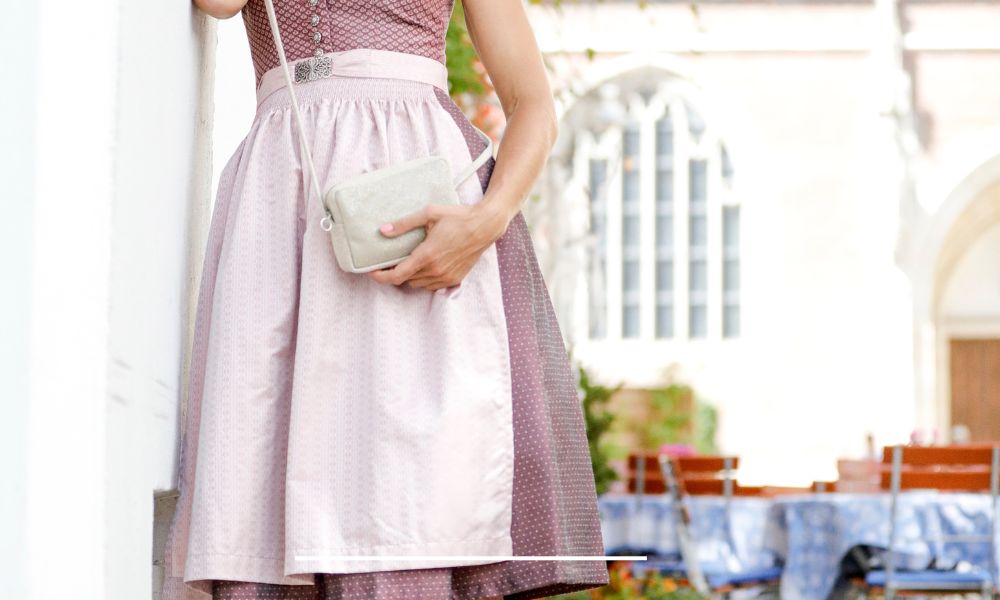Dirndl Austrian Dress
The Dirndl Austrian Dress is called the Dirndl. The company stretches back at least into the time of the Austrian Empire (Austria was then still part of the Austro-Hungarian Monarchy).
ever since that, this garment became a symbol of the national Dirndl Austrian Dress and identity as well as an important component of festive wear in Austria. So in this article, we are going to write about how the Dirndl came into existence, the various styles for them, how to put it and its importance in the Austrian tradition.

The History of Dirndl:
But originally, it developed in Germany (Bavarian state in the 19th century) and it became popular. It was at that time when Austria was part of the Austro Hungarian Empire and people were dressed with folk costumes so that the local culture won’t be ruined.
The Dirndl Austrian Dress, together with the Lederhosen, has been an important part of this [traditional Bavarian costume], and has been continually developed and redefined. At first, the Dirndl contained a white, straight-cut dress with colourful embroidering, another dress with a curious bodice which was laced in front.
Over the years, extra added accessory in the design included coloured aprons, and a number of other items. Today, Dirndl is available for almost all occasions and the clothing can be traditional, or can indicate a more modern orientation.
Styles and Variations:
Bavarian Dirndl Austrian Dress: this type is white straight cut dress with lace up bust and full gathered skirt. In this style, embroidering and ornamenting is used a combination of which buttons or flowers are employed.
The components of the clothing sometimes can be added or changed, for instance a tight fitting vest to the body or a dress apron is often included with the Bavarian Dirndl. Second, the ‘Viennese Dirndl’ is not quite as tight or as classic as in Bavaria. The Viennese Dirndl is tray with a silk or satin bodes, a tight corset and full, flared skirt.
The clothing that they are normally designed with, are generally designed to be used with vivid colours as well as have a lot of embroidery to put that extra touch of class into the clothing that is glamorous.
Furthermore, modern designers have incorporated other form of the traditional Dirndl Austrian Dress which include the Modern Dirndl or the Urban Dirndl. These designs add graphic prints, geometric shapes, or a brilliant coloration to the dress type that makes it closer to the fashionable develop in the modern globe.
Wearing Dirndl:
Several important components define the correct way of wearing a Dirndl Austrian Dress. First, the blouse or “Blusen” has to be worn under the bodice; the sleeves have to be rolled up or pushed down providing a slender, long line silhouette. The bodice actually should be laced tightly so neckline of dress stayed in place during the event but the lace should rarely or will even be untied for a laid back appearance.
Then comes the ‘Mieder’ again known as the outside corset, which is worn over the blouse. This is a type of clothing that fits snugly and has elasticized part at the waist to afford and hourglass figure as well as support to the bust. This garment can either be a part of the entire clothes used for making the Dirndl as a dress or well-crafted into a part of the bodice. The skirt comes next, or “Rock”, and it is put on over the Mieder; and a broad, bright-colored bib is then pinned at the waist.
The apron doubles as ornamentation as it also gives frontal protection for the dress. Again, the typical aprons in the styles of Austria consist of heavily constructed materials, and are usually accompanied with further ornamentation in stitches or any other designs. The final touch of wearing Dirndl is the extras worn to complement the entire dress.
The clasique part of the Dirndl is put on with black shoes or boots most often, but brown or white shoes are also acceptable. A matching or coordinating hat or headpiece is common and traditional and bib or armlets or bangles might also be worn. Furthermore many Dirndl wear traditional Austrian knives or ‘Dirndl Messer’ which are worn in a sheath around the belt area.
Dirndl in Austrian Culture:
Dirndl Austrian Dress, an outfit from tradition and historical functions with an iconic touch to Austria, stands as an outfit called the Dirndl. Seit späten Mittelalter bis heute ist das Tragen des Dirndl als Ausdruck von nationaler Identität und Einbindung des österreichischen Volkes in die europäische Gesellschaft traditioonsbesteht. Dirndl is normally worn today during any festivity, for instance, Oktoberfest in Munich or in Austria.
In these events the Dirndl is an important part of the process, because women and girls Dirndl Austrian Dress in their most beautiful and the prettiest clothes in Dirndl. By doing so, festivals and celebrations are a good occasion to demonstrate the traditional appeal and the rich variety of the Dirndl and the developments which have occurred throughout the years.
Conclusion Dirndl Austrian Dress
Austria is known for the Dirndl, a costume which is worn in honour of many traditions, cultures or even the region. It all started as a simple frock in 19th century Bavaria, and, with time, has become an assortment of tones, colors, prints and styles people see nowadays The dirndl is one of the distinctive attributes of Austria, which has protected and evolved over centuries.
In concrete, one can even say that the Dirndl is not only a dress, but a strong symbol of Austian culture. If you come across a woman in a Dirndl Austrian Dress – next time just stop for a minute, admire the dress and the tradition it represents.
